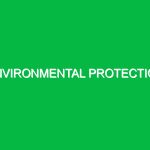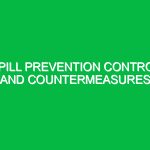Introduction to Waste Management and Recycling Best Practices
Waste management and recycling best practices encompass a set of strategies and methods aimed at minimizing waste generation, maximizing resource recovery, and ensuring the safe handling and disposal of waste materials. Within the Health, Safety, and Environment (HSE) domain, these practices are critical not only for environmental sustainability but also for protecting human health and promoting workplace safety. The reality is that ineffective waste management can lead to environmental degradation, health risks, and significant legal liabilities for organizations.
Every day, industries generate a variety of waste, from hazardous materials to common recyclables. The choices made in managing this waste have far-reaching consequences. For instance, during my time working in a manufacturing facility, I witnessed firsthand the transformation that occurred when we implemented rigorous waste management practices. We not only improved our efficiency but also reduced our waste output by nearly 30% in just six months. This experience solidified my understanding of the tangible benefits that come from prioritizing waste management and recycling.
Identifying Hazards and Risks in Waste Management
To effectively implement waste management and recycling best practices, it is vital to first identify the potential hazards and risks associated with these activities. Various waste types present unique challenges that can impact health and safety.
1. Chemical Hazards
Many industries produce waste that contains hazardous chemicals. These can include solvents, heavy metals, and toxic substances that, if not properly managed, can lead to severe health issues like respiratory problems or skin irritation. For example, a construction site that improperly disposes of paint thinners may expose workers to harmful fumes.
2. Biological Hazards
In sectors such as healthcare, the management of biomedical waste is crucial. Sharps, infectious materials, and pharmaceutical residues are common biological hazards. Improper handling of these wastes can lead to infections, disease transmission, and legal ramifications.
3. Physical Hazards
Waste management operations often involve heavy lifting, machinery, and moving vehicles, which can pose physical risks. Workers may suffer from musculoskeletal injuries or accidents if safety measures are not in place. For instance, I recall an incident where a colleague was injured while moving large bins of waste due to inadequate training on proper lifting techniques.
4. Environmental Hazards
Poor waste management can lead to significant environmental hazards, including soil contamination and water pollution. A notable case was reported in a local newspaper about a landfill leak that contaminated a nearby river, affecting wildlife and local communities. Such incidents highlight the critical need for responsible waste management practices.
Safety Precautions and Best Practices
Once the potential hazards are identified, organizations must implement safety precautions and best practices to mitigate risks. Here are some actionable strategies:
1. Conduct Regular Training
Education is paramount. Regular training sessions for all employees involved in waste management can ensure they are aware of the hazards and understand the safety protocols. For instance, using case studies from your industry can illustrate the consequences of neglecting safety measures.
2. Use Personal Protective Equipment (PPE)
Ensuring that all employees have access to appropriate PPE is non-negotiable. This includes gloves, masks, goggles, and protective clothing, depending on the waste type. During my tenure at an industrial site, we noticed a significant drop in injury rates after implementing mandatory PPE protocols.
3. Implement Standard Operating Procedures (SOPs)
Developing and enforcing SOPs for waste handling can greatly reduce risks. These procedures should cover waste segregation, storage, transportation, and disposal methods. For example, separating hazardous and non-hazardous waste at the source prevents cross-contamination and simplifies recycling processes.
4. Establish Clear Labeling Systems
Proper labeling of waste containers is critical. Color-coded bins for different waste types can help employees quickly identify where to dispose of materials safely. Clear labels can also provide information on the potential hazards of the contents, aiding in safe handling.
5. Regular Waste Audits
Conducting waste audits can help organizations identify inefficiencies and areas for improvement. By analyzing waste generation and disposal methods, companies can develop strategies to minimize waste and enhance recycling efforts.
Regulations and Standards Governing Waste Management
Compliance with regulations and standards is essential in ensuring that waste management practices align with legal requirements. Various local, national, and international regulations govern waste management and recycling. Here are a few key standards to be aware of:
1. Resource Conservation and Recovery Act (RCRA)
In the United States, the RCRA establishes guidelines for waste management, focusing on the treatment, storage, and disposal of hazardous waste. Organizations must comply with these regulations to avoid substantial fines and legal issues.
2. ISO 14001
This international standard provides a framework for environmental management systems (EMS). By adopting ISO 14001, organizations can enhance their waste management practices and demonstrate their commitment to sustainability.
3. European Union Waste Framework Directive
For companies operating within the EU, this directive lays down essential principles of waste management, including the waste hierarchy, which prioritizes prevention, reuse, recycling, and recovery.
Waste Management and Recycling Best Practices: A Summary
Incorporating effective waste management and recycling best practices is crucial for ensuring health, safety, and environmental protection. Organizations must recognize the potential hazards associated with waste and take proactive steps to mitigate risks. Regular training, proper use of PPE, adherence to SOPs, clear labeling, and continuous audits are vital strategies for successful waste management initiatives.
Moreover, compliance with relevant regulations and standards is not just a legal obligation; it is also a moral responsibility to protect employees, customers, and the environment. By fostering a culture of safety and sustainability, organizations can contribute to a healthier planet while enhancing operational efficiency.
In my experience, the journey toward robust waste management practices is not merely about compliance; it’s about building a legacy of responsibility and stewardship. Each small change can lead to significant benefits, both for the organization and the broader community.
Waste management and recycling best practices are an ongoing commitment, requiring vigilance and adaptability. As we continue to face environmental challenges, the importance of these practices in the HSE domain cannot be overstated. By prioritizing safety and sustainability, organizations can pave the way for a healthier, more sustainable future.


